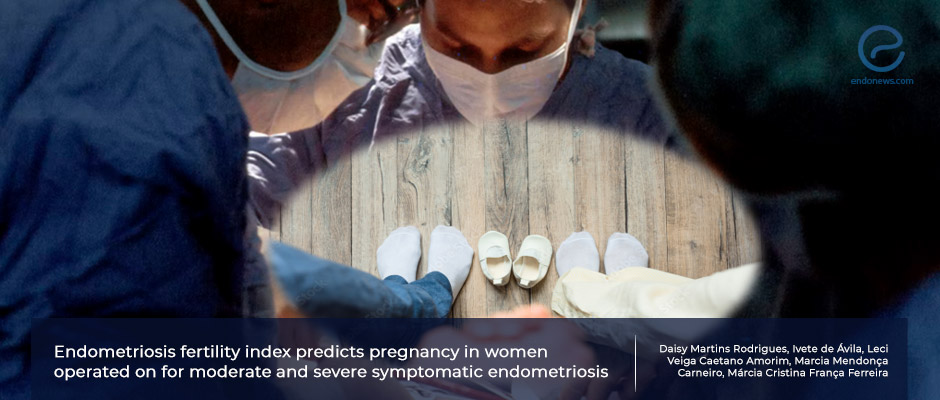The higher the Endometriosis Fertility Index, the higher the chance of getting pregnant
Feb 4, 2022
The prediction of conception after endometriosis surgery is possible using Endometriosis Fertility Index (EFI).
Key Points
Highlights:
- Endometriosis Fertility Index (EFI) is a useful tool to predict postoperative pregnancy in women with endometriosis.
Importance:
- Women who will undergo endometriosis surgery could be informed about the postoperative pregnancy rate by using Endometriosis Fertility Index (EFI).
What’s done here?
- A retrospective cohort study was conducted to evaluate the patients with endometriosis who underwent video laparoscopy for moderate and severe endometriosis in Brazil.
- The study population included women having fertility problems prior to surgery, desire for getting pregnant, and surgical indication for treatment of endometriosis for pain and/or infertility.
- Excision of all peritoneal implants, restoration of the anatomic pelvic structure, removal of endometriomas, and complete resection of deep nodules was performed.
- Endometriosis Fertility Index (EFI) was calculated by the combination of clinical and surgical factor scores of all participants (0 to 10, with zero representing the worst prognosis).
- The study population was followed up to postop 36 months and spontaneous pregnancy rates, pregnancy rates after IVF, and live birth rate were correlated.
Key results:
- A total of 77 women were included [53 women (68.8%) attempted to conceive spontaneously, 24 (31.2%) tried to conceive by IVF treatments].
- Conception occurred in 29 women in the group that tried spontaneous pregnancy (54.7%), 28 had live births (52.8%).
- In the IVF group, 13 patients achieved pregnancy (54.1%), and 10 had live births (41.7%).
- Women who became pregnant in both groups had a mean EFI score of 6-8. Most women with an EFI score below 5 could not conceive postoperatively.
- More than 80% of pregnancies occurred in the first 12 months, the rate was relatively decreasing over time.
- Preoperative infertility duration of 36 months or more, the presence of endometrioma, and having EFI 5 or less were found to be significant poor prognostic factors for spontaneous pregnancy.
Strengths and Limitations
- The strength is its design, strict inclusion and exclusion criteria, and patients with surgically confirmed moderate or severe endometriosis.
- Additionally, the collection and analysis of data by the same team in a uniform and detailed manner.
- The retrospective design, possibility of misinterpretation in the calculation of EFI, small sample size, the inclusion of patients with only moderate or severe endometriosis are the limitations.
Lay Summary
The women who desire to get pregnant may also suffer from fertility problems depending on several mechanisms such as anatomic distortion, peritoneal adhesions, tubal dysfunction, impaired quality of oocytes, and impaired endometrial receptivity.
One of the most important problems in women with fertility desire is whether they can get pregnant after endometriosis surgery or not.
Rodrigues et al. from Brazil published a study titled “Endometriosis fertility index predicts pregnancy in women operated on for moderate and severe symptomatic endometriosis” in the journal Women & Health. The authors aimed to determine the correlation between Endometriosis Fertility Index (EFI) and the postoperative pregnancy rate in women undergoing endometriosis surgery.
They found that preoperative infertility duration of 36 months or more, the presence of endometrioma, and having EFI 5 or less were significant poor prognostic factors for getting pregnant during the postoperative period.
Women having a mean EFI score of 6-8 became pregnant in both groups, especially in the first 12 months postoperatively. The higher the EFI score in patients with moderate and severe endometriosis, the higher is the percentage of live births.
“Our study validates EFI use to predict pregnancies and live births in Brazilian women operated on for moderate and severe endometriosis” the authors concluded.
Research Source: https://pubmed.ncbi.nlm.nih.gov/34852729
endometriosis Endometriosis Fertility Index (EFI) infertility IVF laparoscopy pregnancy

